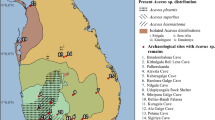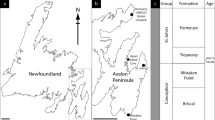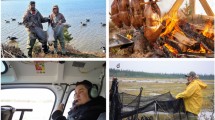Abstract
The Dawenkou Culture, centered in Shandong, is a typical Neolithic period featured by its unique local customs and influential inter-regional expansions. While a series of its social and cultural evolutions have been recognized, subsistence economies that could have fundamentally driven these social changes have not been fully explored. Here, we apply zooarchaeological analyses, in a modelled chronological framework, to faunal remains at the sites of Beiqian, Geduiding and Dongchu, all of which are close to the sea in eastern Shandong Peninsula. Pigs dominate the terrestrial mammals while mollusks are the most frequently recorded maritime animals, indicating a combined subsistence strategy employed by the local populations. Half of the pigs are culled older than 2 years, so their well-developed canines could be harvested by the local societies to fulfill their cultural and ritual demands. Apart from domestic pigs, wildlife resources including wild boars, deer, small carnivores and rodents, as well as marine mollusks and fishes, have also been exploited to supplement human dietary spectrum. The maritime adaptive knowledge accumulated through harvesting sea resources could finally facilitate the dispersal of agriculture in the following millennia in the East Asia.




Similar content being viewed by others
References
Albarella U, Dobney K, Ervynck A, Rowley-Conwy P (2007) Pigs and humans: 10,000 years of interaction. Oxford University Press, Oxford
Bull G, Payne S (1982) Tooth eruption and epiphyseal fusion in pigs and wild boar. In: Wilson B, Grigson C, Payne S (eds) Ageing and sexing animal bones from archaeological sites, vol 109. British Archaeological Reports, Oxford, pp 55–71
Chen S (Under review) Feeding styles of pigs and dogs at Geduiding. Submitted to Acta Anthropologica Sinica
Cucchi T, Hulme-Beaman A, Yuan J, Dobney K (2011) Early Neolithic pig domestication at Jiahu, Henan Province, China: clues from molar shape analyses using geometric morphometric approaches. J Archaeol Sci 38:11–22
Davis SJM (1987) The archaeology of animals. B.T. Batsford Ltd, London
Grant A (1982) The use of tooth wear as a guide to the age of domestic ungulates. In: Wilson B, Grigson C, Payne S (eds) Ageing and sexing animal bones from archaeological sites, vol 109. British Archaeological Reports, Oxford, pp 91–108
Greenfield HJ (1991) Fauna from the Late Neolithic of the Central Balkans: issues in subsistence and land use. J Field Archaeol 18(2):161–186
Grigson C (2007) Culture, ecology, and pigs from the 5th to the 3rd millennium BC around the Fertile Crescent. In: Albarella U, Dobney K, Ervynck A, Rowley-Conwy P (eds) Pigs and humans: 10,000 years of interaction. Oxford University Press, Oxford, pp 83–108
Higgs ES, Vita-Finzi C (1972) Prehistoric economies: a territorial approach. In: Higgs ES (ed) Papers in economic prehistory. Cambridge University Press, Cambridge, pp 27–36
Hillson S (1986) Teeth. Cambridge University Press, Cambridge
Hillson S (2009) Mammal bones and teeth: an introduction guide to methods of identification. Routledge, London
Hou Y, Ma X (2021) Kaogu Yizhi Chutu Beilei Jianding Zhinan [A guide to methods of identification of shells from archaeological site]. Science Press, Beijing
Hu Y, Luan F, Wang S, Wang C, Richards MP (2009) Preliminary attempt to distinguish the domesticated pigs from wild boars by the methods of carbon and nitrogen stable isotope analysis. Sci China, Ser D Earth Sci 52(1):85–92
Jin G, Wagner M, Tarasov PE, Wang F, Liu Y (2016) Archaeobotanical records of Middle and Late Neolithic agriculture from Shandong Province, East China, and a major change in regional subsistence during the Dawenkou Culture. Holocene 26(10):1605–1615
Jin G, Guo R, Wei N (2017) Haidai diqu shiqian daoyicun yanjiu [Prehistoric rice remains in Haidai Area]. Dongnan Wenhua [Southeast Culture] 5:60–71
Lin M (2016) A statistical view for Chinese zooarchaeology: from the Neolithic to pre-Han periods. Archaeol Anthropol Sci 8:89–95
Luan F (1997) Haidai Diqu Kaogu Yanjiu [Archaeological research in the Haidai Region]. Shandong University Press, Jinan
Luan F (2005) Haidai diqu Shiqian shiqi daozuo nongye de chansheng fazhang he kuosan [Advent, development and diffusion of rice cultivation in prehistoric Haidai Region]. Wenshizhe [Lit, His Philos] 6:41–47
Luan F (2013) The Dawenkou culture in the lower Yellow River and Huai River basin areas. In: Underhill A (ed) A companion to Chinese archaeology. Wiley-Blackwell, Chichester, pp 411–434
Luo Y (2012) Zhongguo Gudai Zhulei Xunhua Siyang yu Yishixing Shiyong [The domestication, raising and ritual use of pig in ancient China]. Science Press, Beijing
Luo Y, Zhang J (2008) Henan Wuyangxian Jiahu yizhi chutu zhugu de zaiyanjiu [Re-investigation of unearthed pig bones from the Jiahu site, Wuyang, Henan]. Kaogu [Archaeol] 1:90–96
Ma Y, Wu W, Wang Q, Zhang C, Jin G (2015) Dalian Wangjiacun yizhi tanhua zhiwu yicun yanjiu [Analyses of carbonized plant remains at Wangjiacun site in Dalian]. Beifang Wenwu [Northern Cultural Relics] 2:39–43
Manipady S, Menezes RG, Bastia BK (2006) Death by attack from a wild boar. J Clin Forensic Med 13(2):89–91
Miyamoto K (2019) The spread of rice agriculture during the Yayoi period: from the Shandong Peninsula to Japanese Archipelago via Korean Peninsula. Japanese J Archaeol 6(2):109–124
Nanjing Museum (1981) Jiangsu Pixian Dadunzi yizhi dierci fajue [The second excavation of Dadunzi site, Pi County, Jiangsu]. Kaoguxue Jikan [Archaeological Collections] 1:27–81
Nie Z (2013) Jiaodong Bandao Dawenkou Wenhua Zaoqi de Juluo yu Shengye [Settlement patterns and subsistence strategies in Jiaodong Peninsula during early Dawenkou culture]. (Ph.D.). Shandong University, Jinan
Reitz EJ, Wing ES (2008) Zooarchaeology, 2nd edn. Cambridge University Press, Cambridge
Robbeets M, Bouckaert R, Conte M, Savelyev A, Li T, An D-I, . . . Ning C (2021) Triangulation supports agricultural spread of the Transeurasian languages. Nature. https://doi.org/10.1038/s41586-021-04108-8
Rolett BV, Chiu M-Y (1994) Age estimation of prehistoric pigs (Sus scrofa) by molar eruption and attrition. J Archaeol Sci 21(3):377–386
Rowley-Conwy P, Albarella U, Dobney K (2012) Distinguishing wild boar from domestic pigs in prehistory: a review of approaches and recent results. J World Prehist 25:1–44
Schmid E (1972) Atlas of animal bones. Elsevier, London
Shandong Cultural Relics Bureau, Jinan Museum (1974) Dawenkou [Dawenkou Site]. Beijing: Cultural Relics Press.
CASS IA (1999) Jiaodong Bandao Beiqiu Yizhi Huanjing Kaogu [Environmental Archaeology of Shell Mounds in eastern Shandong Peninsula]. Social Science Academic Press, Beijing
Silver I (1969) The ageing of domestic animals. In: Brothwell D, Higgs E (eds) Science in Archaeology. Thames & Hudson, London, pp 283–302
Song Y, Wang Z, Zhao W, Wang J (2017) Muping Geduiding yizhi chutu dongwu yicun yanjiu baogao [Study of animal remains at Geduiding, Muping]. Dongfang Kaogu [Oriental Archaeology] 14:245–268
Udatsu T, Miyamoto K, Luan F, Jin G, Wang F (2018) Yangjiaquan yizhi shuitian yiji tancha [Exploration of paddy field remains at the Yangjiaquan site]. Dongfang Kaogu [Oriental Archaeology] 15:261–281
Underhill A (2001) Dawenkou. In: Peregrine PN, Ember M (eds) Encyclopedia of prehistory. Springer Science Business Media, New York, pp 12–15
Vigne J-D, Bridault A, Horard-Herbin M-P, Pellé E, Fiquet P, Mashkour M (2000) Wild boar - age at death estimates: the relevance of new modern data for archaeological skeletal material. 2. Shaft growth in length and breadth. Archeol Appl Anthropozoologica 31:19–27
Von Den Driesch A (1976) A guide to the measurement of animal bones from archaeological sites. Peabody Museum of Archaeology and Ethnology, Harvard University, Cambridge
Wang F, Song Y (2019) Jinan shi Zhangqiu qu Jiaojia yizhi 2016–2017 nian daxing muzang fajue jianbao [Big tomb excavation in 2016–2017 at the Jiaojia site, Zhangqiu, Jinan]. Kaogu [Archaeology] 12:20–48
Wang F, Luan F, Song Y (2011) Shandong Jimo Beiqian yizhi 2007 nian fajue jianbao [Brief report of excavation in 2007 at the Beiqian site, Jimo, Shandong]. Kaogu [Archaeology] 11:3–23
Wang Z, Dong B, Wang Q, Sun Z, Zhou Q (2013) Yantai shi Muping qu Geduiding yizhi diaocha kantan jianbao [Brief survey and excavation report of the Geduiding site at Muping, Yantai City]. Haidai Kaogu [Haidai Archaeol] 6:1–14
Wang Q, Ren T, Li H, Nie Z, Yu C, Li B, Wang Z (2013) Beiqian suozai Qingdao Dingziwan yanan shiqian zaoqi yizhi de ziyuanyu diaocha yu fenxi [Site catchment analyses of Beiqian and its surrounding Dingzi Gulf region in Qingdao]. Dongfang Kaogu [Orient Archaeol] 10:280–335
Wang F, Fan R, Kang H, Jin G, Luan F, Fang H, Lin Y, Yuan S (2012) Reconstructing the food structure of ancient coastal inhabitants from Beiqian village: stable isotopic analysis of fossil human bone. Sci Bull 57(17):2148–2154
Wang F, Song Y, Li B, Fan R, Jin G, Yuan S (2014) C and N stable isotope analysis of human and animal bones at the Beiqian site. Sci China Earth Sci 57(3):408–414
Wu R (2018) Dawenkou Wenhua Shengye Jingji Yanjiu: Laizi Zhiwu Kaogu de Zhengju [Subsistence at Dawenkou site: evidence from archaeobotany]. (MA). Shandong University, Jinan
Wu H, Song Y (2017) Geduiding suozai Jiaodong bandao beian shiqian zaoqi beiqiu yizhi de ziyuanyu diaocha yu fenxi [Site catchment analyses of Geduiding and its surrounding north coast in Shandong Peninsula]. Dongfang Kaogu [Orient Archaeol] 14:300–332
Xu S (2019) Liaodong bandao nanduan kaoguxue wenhua biannian yu puxi [The chronology and genealogy of archaeological cultures in southern Liaodong Peninsula]. Kaogu Xuebao [Acta Archaeol Sin] 2:143–162
YCRB, CASS IA (1997) Shandong sheng Penglai Yantai Weihai Rongcheng shi beiqiu yizhi diaocha jianbao [Survey report of shell middens in Penglai, Yantai, Weihai, and Rongcheng in Shandong]. Kaogu [Archaeol] 5:25–33
Zhang S (2008) Zhongguo Haiyang Beilei Tujian [Atlas of Chinese oceanic shells]. Ocean Press, Beijing
Zhang C, Hong X (2016) Zhongguo yanhai de zaoqi haiyang shiyingxing wenhua [Early maritime adaptive cultures in China]. Nanfang Wenwu [Cultural Relics Southern China] 3:1–13
Zhao X, Geng X, Zhang J (1979) Zhongguo dongbu 20000 nian laide haipingmian bianhua [Sea level changes over the past 20000 years in East China]. Haiyang Xuebao [acta Oceanologia Sinica] 1(2):269–281
Acknowledgements
We are grateful for the insightful comments received from anonymous reviewers, which have largely improved the paper.
Funding
We are grateful of financial support received from the SJTU research grant for Minghao Lin and the Shandong University Multidisciplinary Research and Innovation Team of Young Scholars (2020QNQT018) and National Key R&D Program of China (Grant No. 2020YFC1521606) for Yanbo Song.
Author information
Authors and Affiliations
Corresponding authors
Ethics declarations
Conflict of interest
The authors declare no competing interests.
Additional information
Publisher's note
Springer Nature remains neutral with regard to jurisdictional claims in published maps and institutional affiliations.
Rights and permissions
About this article
Cite this article
Lin, M., Song, Y., Wang, F. et al. Live on the land and fed by the sea: diverse subsistence economies in the Neolithic Dawenkou Period in Shandong Peninsula, China. Archaeol Anthropol Sci 14, 132 (2022). https://doi.org/10.1007/s12520-022-01603-5
Received:
Accepted:
Published:
DOI: https://doi.org/10.1007/s12520-022-01603-5




